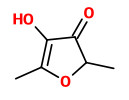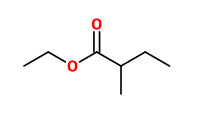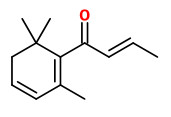Ananas comosus (L.) Merr. - syn.Ananas sativus Schult.; Bromelia ananas L.; Bromelia comosa L. - Bromeliaceae
pineapple, Ananas
Terrestrial, erect perennial, native to tropical South America; 0.5-1.20m; stem short, stout; leaves long and sword-shaped, strong, with saw-toothed edges; flowers sessile, purple or red, petals provided with 2 ligules at the base, the calyx very short, ovary inferior, style filiform, 3-branched; fruit a syncarpium , formed of the coalescens of thickened rachis; spiny-toothed bracts, abortive ovaries and adhering parts into one large globose, ovoid or elongated fleshy body known as a „pineapple“. The plant has been traditionally propagated by slips, division of crowns or by stem sections.
The term „Pineapple“ is rather misleading, because the fruit is neither an apple nor a pine. The name ananas is of Guarani origin. South American Indians selected wild-growing ananas and it was spread to the West Indies before the Spanish conquest. It was brought to Africa, India and Southeast Asia by the Portuguese and the Spanish. Today major producers of pineapple are Hawaii, the Philippines, Brazil, Malaysia, Thailand, Formosa and Mexico.
https://de.wikipedia.org/wiki/Ananas
Dominant volatile ester compounds of fresh-cut pineapple (headspace SPME GC-MS) were methyl 2-methylbutanoate (1.0%), methyl hexanoate (2.2%), methyl 5-hexenoate (3.2%), ethyl hexanoate (1.2%) and ethyl 5-hexenoate (2.1%). Minor components were methyl (3-methylthio)propanoate, ocimene, 3,7-dimethyl-1,3,7-octatriene, ethyl (3-methylthio)propanoate, and methyl 4-octenoate e.g.
[Lamikanra, Olusola. „The role of esterified compounds in the developement of staleness in fresh-cut fruit“ American Chemical Society Symposium Series. Vol.867 (2004), 263-273]
„Quantitative measurements performed by stable isotope dilution assays (SIDA) and a calculation of odor activity values (OAVs) of 12 selected odorants revealed the following compounds as key odorants in fresh pineapple flavor: 4-hydroxy-2,5-dimethyl-3(2H)-furanone (HDF; sweet, pineapple-like, caramel-like), ethyl 2-methylpropanoate (fruity), ethyl 2-methylbutanoate (fruity) followed by methyl 2-methylbutanoate (fruity, apple-like) and 1-(E,Z)-3,5-undecatriene (fresh, pineapple-like). A mixture of these 12 odorants in concentrations equal to those in the fresh pineapple resulted in an odor profile similar to that of the fresh juice. Furthermore, the results of omission tests using the model mixture showed that HDF and ethyl 2-methylbutanoate are character impact odorants in fresh pineapple.“
Odor description and odor activity values were: methyl 2-methylpropanoate (fruity, sweet, OAV 24.4), ethyl 2-methylpropanoate (fruity, sweet, OAV 2400), methyl 2-methylbutanoate (fruity, apple-like, OAV 595), ethyl butanoate (fruity, OAV 75.2), ethyl 2-methylbutanoate (fruity, OAV 1050), octanal (citrus, fatty, OAV 2.40),
(E,Z)-1,3,5-undecatriene (fresh, pineapple-like, OAV 445), β-damascenone (fruity, sweet, OAV 111), δ-octalactone (coconut-like, OAV 0.2), 4-hydroxy-2,5-dimethyl-3(2H)-furanone (sweet, pineapple-like, OAV 2680)
δ-decalactone (sweet, coconut-like, OAV 0.20), vanillin (vanilla-like, OAV 0.24).
[Odor-active constituents in fresh pineapple (Ananas comosus [L.] Merr.) by quantitative and sensory evaluation. Tokitomo Y, Steinhaus M, Büttner A, Schieberle P., Biosci Biotechnol Biochem. Vol.69(7), 2005, 1323-30]
http://www.tandfonline.com/doi/pdf/10.1271/bbb.69.1323
 4-hydroxy-2,5-dimethyl-3(2H)-furanone (HDF, HDMF, Furaneol) |  (E,Z)-1,3,5-undecatriene |  ethyl 2-methylbutanoate |  (E)-β-damascenone |
„HRGC-MS analysis of juices made from fresh-cut fruit revealed the known prevalence of esters, with methyl 2-methylbutanoate, methyl 3-(methylthio)-propanoate, methyl butanoate, methyl hexanoate, ethyl hexanoate and ethyl 3-(methylthio)-propanoate, as well as 2,5-dimethyl-4-methoxy-3(2H)-furanone (mesifurane) and 2,5-dimethyl-4-hydroxy-3(2H)-furanone (furaneol) as major constituents. A corresponding flavour profile was rarely found in water phases/recovery aromas under study. In most cases, the characteristic methyl esters and hydroxy or acetoxy esters were lacking completely or appeared only in minor amounts in these products. Whereas a few of the commercial single strength juices revealed fruit-related flavour profiles, juices produced from concentrates mostly exhibited a flavour composition similar to that of concentrates, i.e. they were predominantly determined by their contents of furaneol and did not show the fruit-related ester distribution. Similarly, the jams under study were poor in typical pineapple constituents.“
[Aroma profiles of pineapple fruit (Ananas comosus [L.] Merr.) and pineapple products., Elss, S., Preston, C., Hertzig, C., Heckel, F., Richling, E., Schreier, P., LWT-Food Science and Technology, 38(3), 2005, 263-274]
„Fully ripe air-freighted pineapples were characterised by elevated concentrations of two 1,3,5,8-undecatetraene isomers, methyl 3-methylbutanoate and 4-methoxy-2,5-dimethyl-3(2H)-furanone, which have been reported as potent contributors to the pineapple flavour.“
[Assignment of distinctive volatiles, descriptive sensory analysis and consumer preference of differently ripened and post-harvest handled pineapple (Ananas comosus [L.] Merr.) fruits., Steingass, C.B., Dell, C., Lieb, V., Mayer-Ullmann, B., Czerny, M., Carle, R., European Food Research and Technology, 242(1), 2016, 33-43]
Ananas comosus fruit juice, Pineapple juice, Succus Ananas, Ananas-Saft - as source of bromelaine
The fresh or concentrated pale yellow juice of Ananas comosus fruits (with pleasant smell and delicious sweet taste) contains a mixture of proteolytic enzymes, called bromelain.
Citric acid (1-5%), malic acid, sugars (10-15%), vanillin, acrylic acid and ethyl acrylat, ascorbic acid and a small amount of volatile oil. [CRC, BI]
Effects. Bromelaine acts protein-digesting, milk-clotting, antiinflammatory and smooth muscle relaxing. The unripe fruit juice is reported to be purgative, diuretic and anthelminthic. [CRC, BI]
Bromelaine causes a significant suppression of footpad edema in rats induced either with carrageenin alone or with a mixture of carrageenin and forskolin. (Bromelain reduces plasma kininogen.) The antiphlogistic effect is as strong as that shown by indometacin. [Sugio K, Daly JW, Life Sciences, 33, (1983), 65-73]
Uses. Internally for digestive problems,edema, as antiinflammatory agent (especially following surgery) and also for contusions and hematomas. [CRC,BI]
Dosage. As coated tablet with 60-80mg bromelaine trice daily, other preparations corresponding.
Side effects. The drug may cause diarrhea or allergy and should not be taken by pregnant or nursing women.
Other uses. Pineapple is cultivated worldwide for fresh or canned food, or made into juice. Bromelain is used to tenderize meat and in „chill-proofing“ beer. Chill-proofing means hydrolization of protein-tannin complexes. Resulting polypeptides help foam retention. Commercial bromelain is generally prepared from pineapple wastes.
The unripe fruit causes violent purgation.

Redouté,P.J., Les Liliacées, vol.8 t.456 (1805-1816) [P.J.Redouté]
http://plantgenera.org/species.php?id_species=57117
